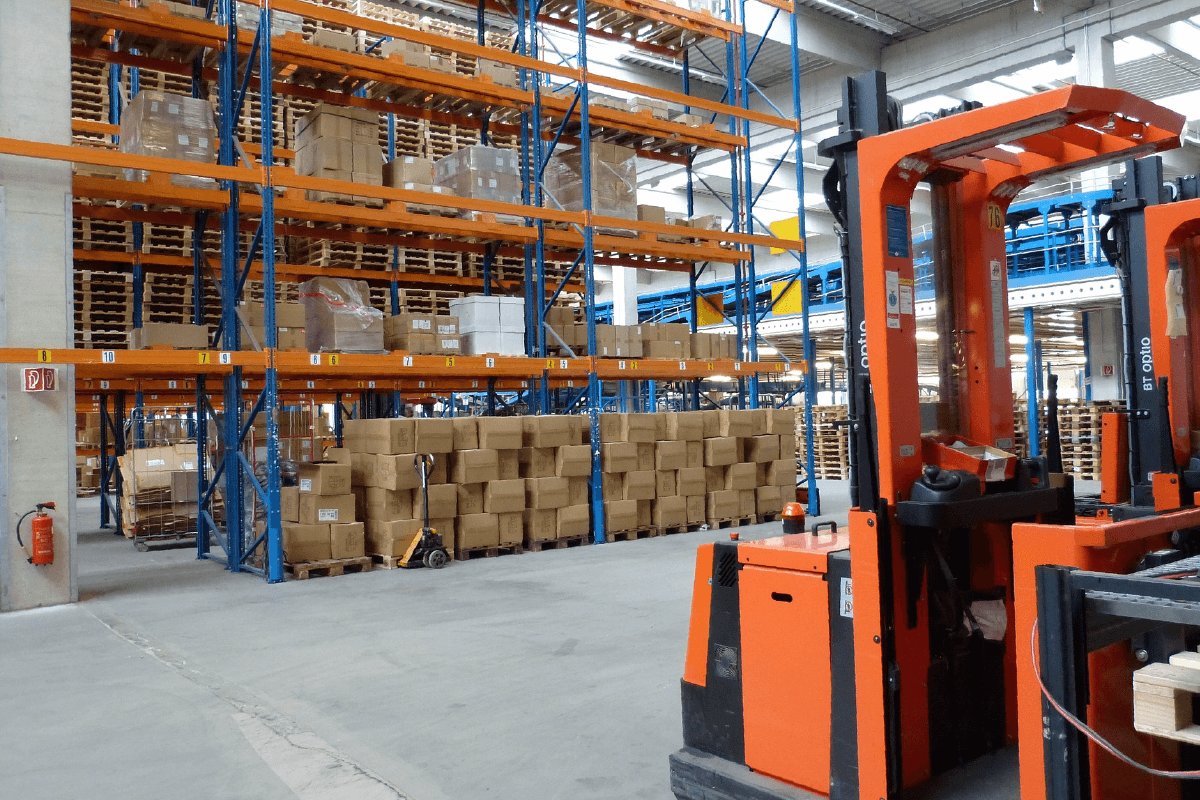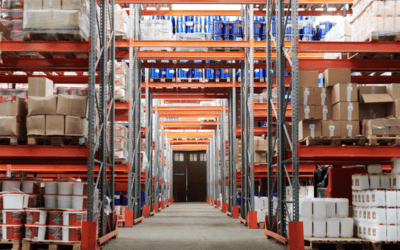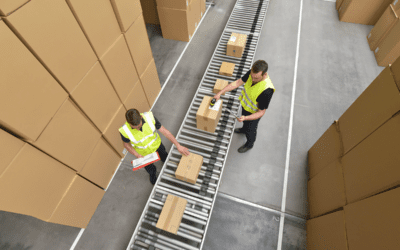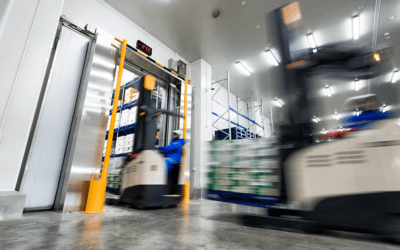With huge impacts to the economy and a world that has been far from normal over the past 6 months, this year has been a challenge for businesses across the world in virtually every industry – especially the logistics sector. The logistics supply chains that transport goods across the globe are one of the most vital services to our everyday lives, but since the outbreak of COVID-19 they’ve been hampered and put in a place of uncertainty, with “One estimated economic impact of COVID-19 on the global logistics industry as a decrease of 6.1 percent in gross value added by the logistics industry.”
So, how do you survive a crisis of this scale? Or even better: how can you benefit from this?
In any case, the corona crisis has taught us that data is crucial. Logistics service providers that make smart use of data are much more successful in taking advantage of market opportunities. Where should you start and what should you pay attention to? We have put together a checklist for you.
1. Smart logistics is data-driven
To start off, data should be central to a smart logistics process. With data available in real-time, you can significantly increase your communication opportunities towards your customers. Through clear reports, you also gain insight into your most important KPIs, so that your work can be adjusted accordingly. As a result, you can for example organise your warehouse more efficiently. Lastly, data can give insight into which customers help you earn money and which customers cost you money. In short, information has an impact on many areas in your organisation. And the great thing is the data is within your reach. The only question is, are you using it to your advantage?
2. Calculate the workload
Our second tip for a successful approach is to calculate the expected workload. By analysing your historical data, you can quickly see where the peaks are in your logistics process, as well as when it’s calmer. These fluctuations can occur seasonally, weekly or even appear in one day. By using the historical data, you can calculate the expected workload and then adjust your resources accordingly.
3. Stay in touch with your customers’ needs
Your customers are the reason for the existence of your company. You have therefore likely tailored your services to your customer’s requirements – however, these will change over time. Do you know what’s currently going on with your customer’s needs? By proactively listening and asking your customers, you can respond to their wishes and possible frustrations faster. This way you stay one step ahead of the competition.
4. Sharing is caring
From the moment goods arrive until they are delivered to the end customer, you are an indispensable link for your customers. You can record detailed data in your system. What happened with which resources, how long was an article stored somewhere, and what additional (VAL) activities were carried out? Add all the information together and you have a valuable source of information for both you and your customers. Information with which they, for example, can respond better to demand or gain insight into the number of products that must be produced or imported. By proactively sharing data with your customers, you become a legitimate interlocutor.
Brennus van der Klaauw, general manager at VCK Logistics: “Customers appreciate that we can reduce inventory in the chain. In the past, our role was mainly that of an executor who stored and shipped a product and then delivered it. Now we sit down at the table as a valued partner. I also notice that our customers are increasingly open to new possibilities, it offers them the opportunity to focus on the things in which they are good. They do want to keep a feel for what we do, however.”
5. From digitisation to automation
Where digitisation mainly includes the step towards paperless working, automation goes one step further. With automation, you organise your warehouse or other processes in such a manner that they no longer require human interaction after the first step. Consider, for example, the process that is linked to stored goods. You scan it and the system links it directly to the relevant customer. Then your financial solution (seamlessly integrated or controlled via EDI) adds it to the invoice, which is automatically sent to your customer in a personal email message. This is automated, smart logistics.
6. Avoid confusion and frustration
As mentioned earlier, manual actions should be minimised as much as possible and errors should be kept to a minimum. At the same time, there is a need from your customers to be able to follow all processes and steps, so that a completely transparent process is created. Can you not offer them that? Then chances are they will go to your competitor.
Apart from that, by using EDI you can realise a huge efficiency boost. The integration of EDI ensures that you create a seamless flow of information and a smoother collaboration between your internal and external systems. In short, EDI saves you time, costs, and errors by automating repetitive tasks. Even if both parties work with a different system.
7. Broaden your network
Many logistics service providers are specialised in a specific segment or area. For example, in the supply of the catering industry or the route Netherlands-Italy. On the one hand, this makes your organisation the best partner for that specific segment, but at the same time, it is also vulnerable when things are going (temporarily) less prosperous in that sector or country. By not concentrating on one or two specific customers, but also adding an odd one, you create a diverse customer base and spread the risk.
8. Connect your warehouse & transportation operations
Goods are produced, assembled, transported, stored, transported again and delivered by a retailer to an end consumer. Transportation plays an important role during the logistics process and a smart warehouse is, therefore, exactly attuned to its own fleet or the fleet of external transporters. For example, you increase the transit at your loading docks by allowing your carriers to reserve time slots, or you can keep your terrain structured with Gate Access Control. And of course, you limit your costs by having your trucks drive out the door as full as possible. All this can be achieved with a warehouse that exactly matches your transport activities.
9. Simplify invoicing
From the moment goods are delivered until you send the invoice, this process can sometimes take a few days. After all, you need a signed proof of delivery (POD) to start invoicing. This must, therefore, come back with your drivers and then be processed in the invoicing system. Especially when your drivers’ transport abroad, this process can take one or even several weeks. Fortunately, with modern technology, it is possible to start invoicing immediately upon delivery. For example, by using an app on your driver’s smartphone or tablet where your customers can digitally sign the POD. As soon as the signature is placed, it is immediately communicated to the system and the invoice can be sent out.
10. Software that grows with you
The COVID-19 pandemic has shown that no matter how thoughtful your plans are, unexpected events can always occur and turn your world upside down. Where some companies could barely keep up with the incoming flow of orders, other logistics service providers had to do everything to keep their business afloat. Then it is good to know that you can reduce certain costs to the minimum, for example, the number of users who must have access to your software solution. Leaving aside the corona crisis, you still want to maintain as much flexibility as possible. Think of seasonal fluctuations or a strong growth of your company. Software as a Service (SaaS) offers a solution. By using SaaS, you can easily adjust the number of users and pay less, alternatively you can increase the number of users with the same ease, helping your business be flexible and always ready to scale.
We hope this blog post has given you some insight into some key areas your third-party logistics business can focus on in order to scale and remain successful through a difficult time for everyone. If you’re looking for a solution that can help you benefit from the use of data and automation, look no further than Boltrics.
Boltrics have developed a powerful, modular WMS solution that handles every aspect of your logistics business, with a focus on data insights and automation, along with a seamless integration to Microsoft Dynamics 365 Business Central to handle financials, CRM, HR and more from one singular solution.
Recent Articles
6 Practical Tips to Overcome Logistics Staffing Shortages
The logistics industry has been thriving for quite some time now, with an increase in the number of orders and complex requests from customers. However, the industry faces several challenges, including rising costs, a shortage of capable staff, and difficulty...
Unleash the Power of Flexibility: Boltrics’ Branch Standard Solution for Logistics Service Providers
Logistics service providers, including freight forwarders, transportation companies, and warehouses, are constantly on the lookout for the perfect software solution. They strive to move away from outdated custom-made systems or realise that their current Excel files...
Why your warehouse should implement a cloud WMS
In the rapidly evolving world of logistics and distribution, businesses are constantly seeking innovative solutions to streamline their operations, increase efficiency, and stay ahead of the competition. One such game-changing solution is the a cloud-based Warehouse...







